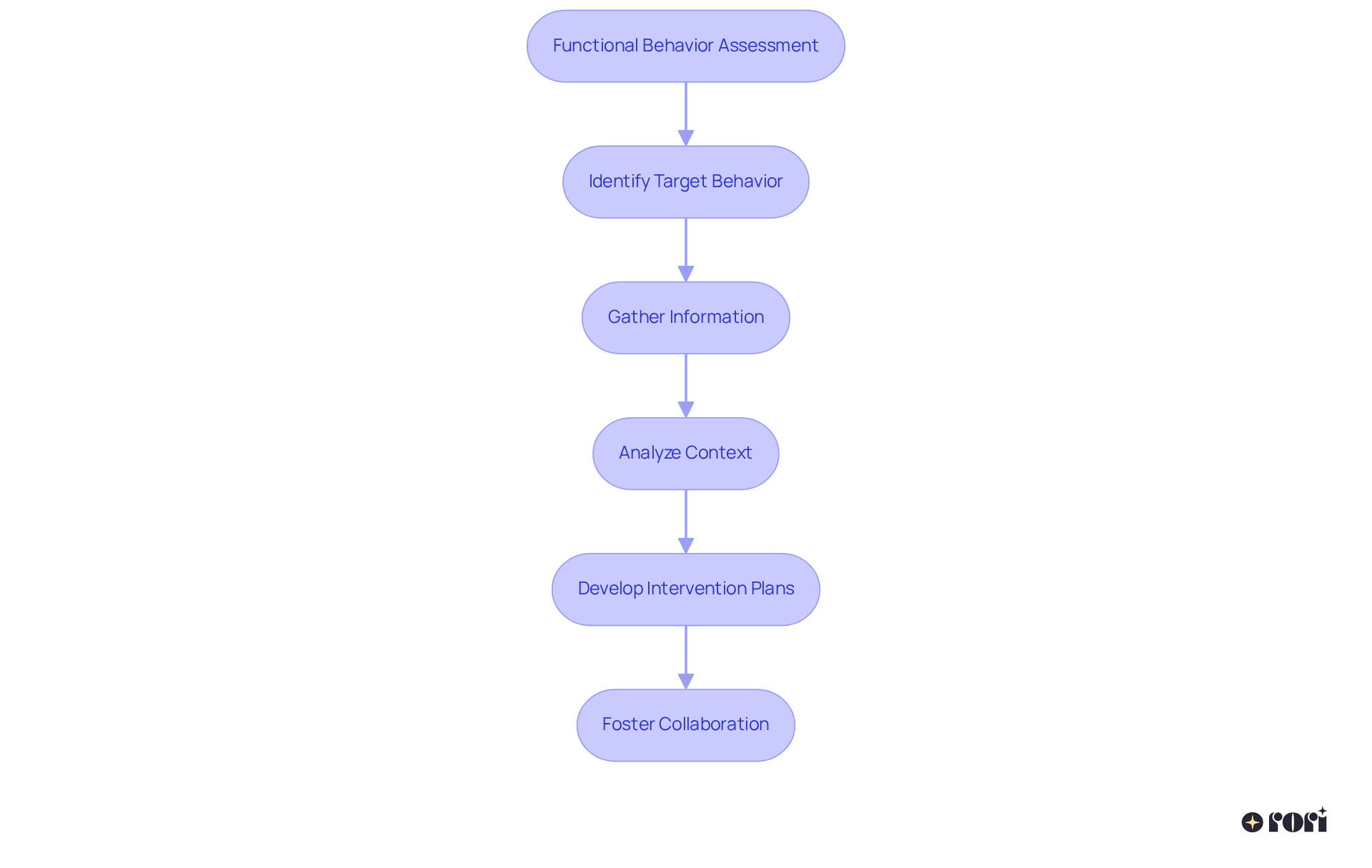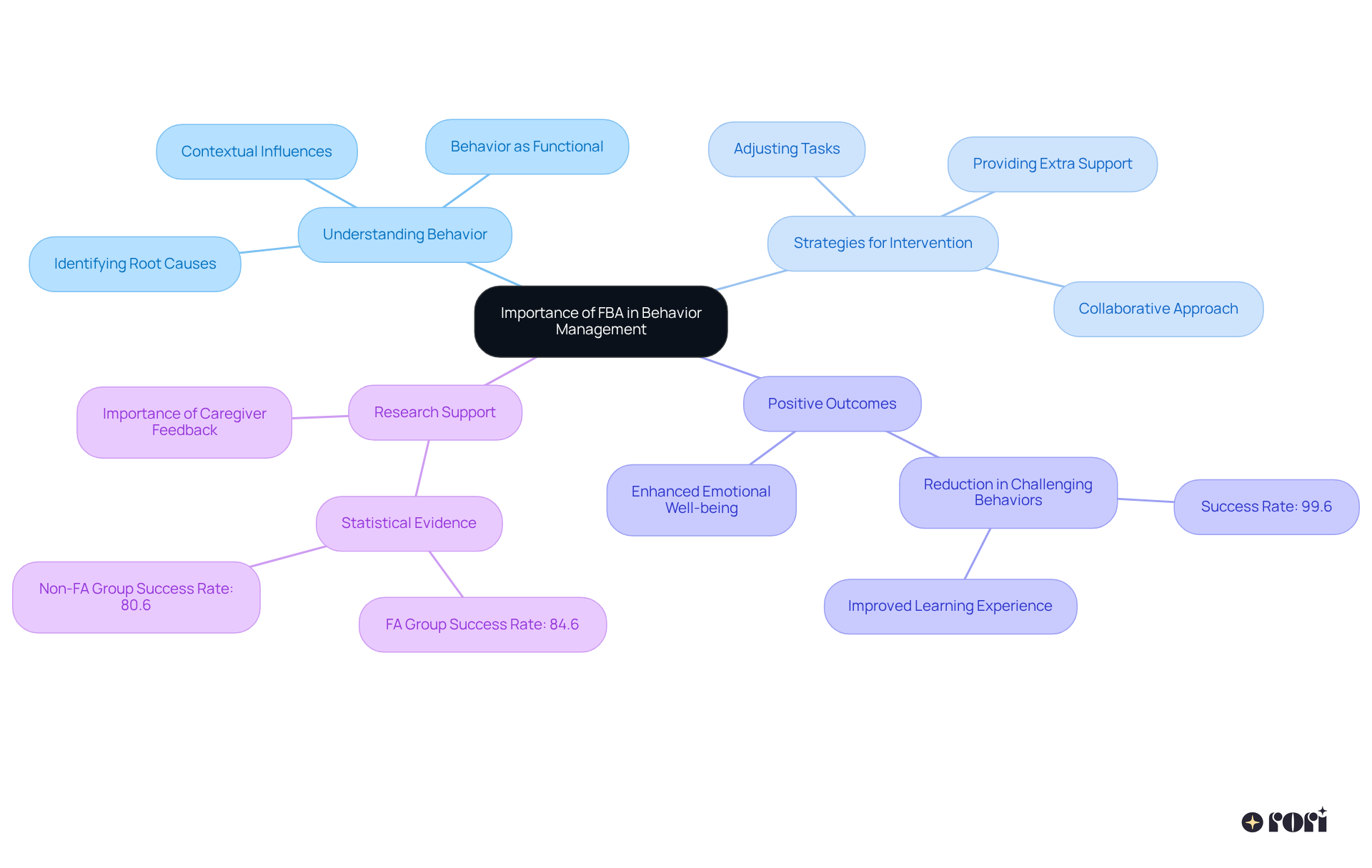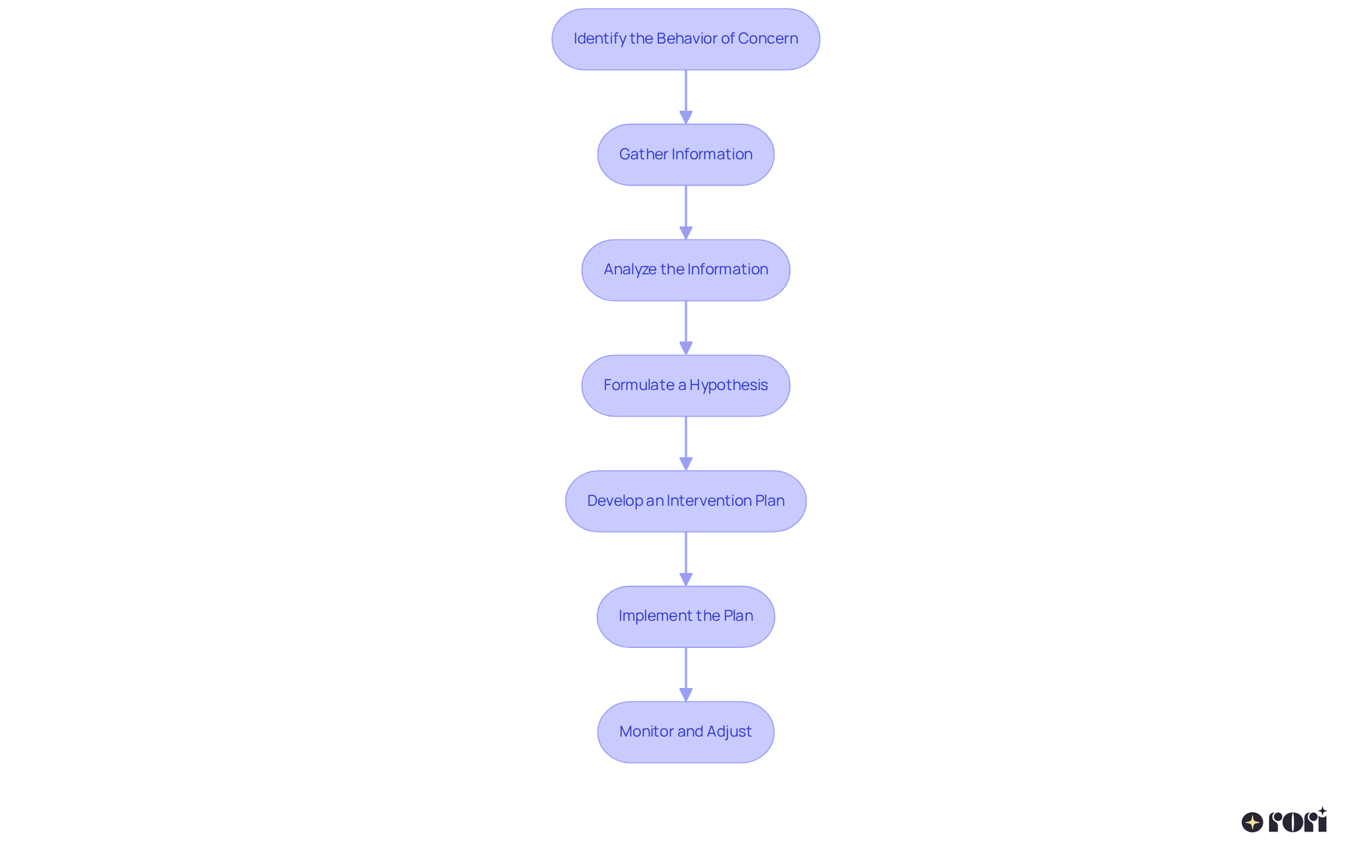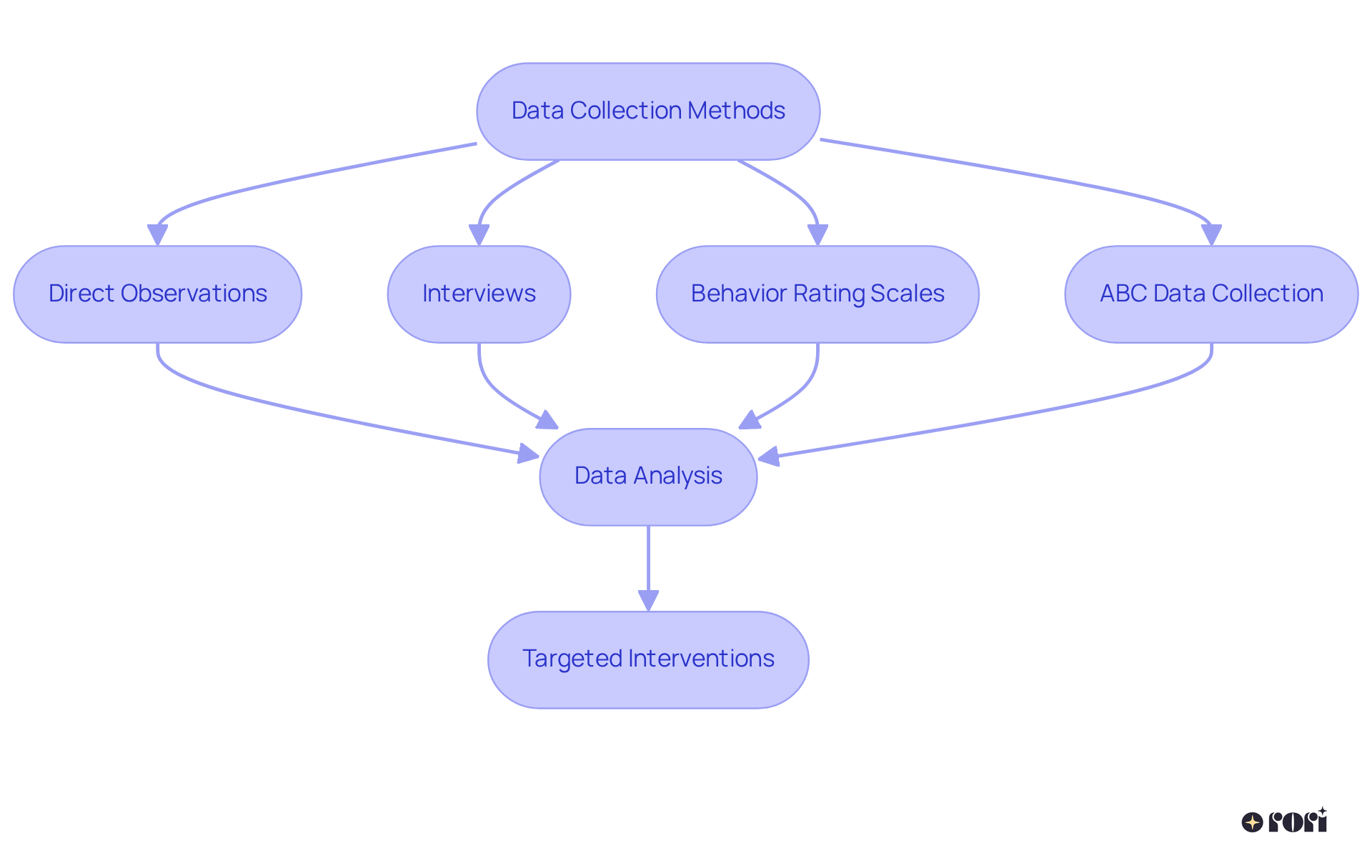This article walks you through the steps of a Functional Behavior Assessment (FBA), highlighting just how crucial it is for managing those challenging behaviors in our kids. By getting to the heart of what’s really going on, we can make a world of difference! 😊
When we gather and analyze data on specific behaviors, we’re not just crunching numbers; we’re discovering insights that help us tailor intervention strategies. These personalized approaches can lead to positive outcomes, and many parents have seen great success in reducing problematic behaviors. Let’s explore this together and find ways to support our little ones!
Understanding the complexities of a child's behavior can often feel overwhelming for parents, especially when faced with challenging actions that disrupt daily life. 😅 A Functional Behavior Assessment (FBA) offers a structured approach to uncover the reasons behind these behaviors, providing insights that can lead to effective intervention strategies. But many parents might wonder: how can they navigate the steps of an FBA to truly understand and support their child's unique needs?
This guide aims to demystify the FBA process, empowering caregivers with the tools to foster positive behavioral changes and enhance their child's overall well-being. Let’s explore this together! We’re here to help you every step of the way!
A Functional Behavior Assessment (FBA) is a structured way to uncover the reasons behind challenging behaviors in young individuals. This process involves gathering detailed information about the specific behavior, the situations around it, and the various factors that might influence it. The main goal of an FBA is to understand why a child acts a certain way, which can help in crafting effective intervention strategies tailored to their unique needs.
By looking at what happens before the behavior (the antecedents), the behavior itself, and what follows (the consequences), parents and professionals can gain insight into the purpose of the action. This understanding is crucial because , like seeking attention, avoiding something, or fulfilling a sensory need. Interestingly, recent research indicates that many parents are using FBAs to personalize approaches for children with autism, highlighting their effectiveness in behavioral therapy.
The steps of an FBA include key components such as:
This thorough approach not only aids in developing personalized intervention plans by qualified analysts, complete with measurable goals and evidence-based strategies, but it also fosters collaboration between parents and clinicians. Plus, with the integration of AI-driven progress report automation, ABA therapy becomes more efficient, freeing up 50% more time for treatment. This allows caregivers to actively engage in supporting their child's behavioral goals through data collection and involvement.
As Dr. Stephen Shore wisely noted, "If you’ve met one individual with autism, you’ve met one individual with autism," reminding us of the importance of tailored assessments like FBAs. Let’s explore this together and see how we can make a difference for our children!

Carrying out the steps of an FBA is essential for managing behaviors! FBAs serve as essential tools that help us uncover the root causes of a child's actions, which is key for developing the steps of an FBA to create effective action plans. When parents and educators understand the role of a behavior, they can create strategies that are more likely to lead to . For example, if a child acts out to avoid a tough task, we can adjust the task or provide extra support instead of resorting to punishment. This proactive approach not only encourages better behavior but also enhances the child's overall learning experience and emotional well-being. 🌟
Research shows that strategies based on FBAs can significantly reduce challenging behaviors, with success rates reaching up to 99.6% in some studies! Rori Care - ABA Therapy emphasizes the importance of clear definitions of behaviors based on caregiver feedback, ensuring that interventions are grounded in a thorough understanding of each child's unique needs. Our conduct care engine performs functional analysis for targeted behaviors and skills, generating automatic progress reports that help clinicians review and approve strategies.
As Ennio Cipani wisely notes, "Effective functional evaluations must go beyond simply tallying occurrences of a behavior; they need to explore the situational dynamics that surround the behavior." By prioritizing the steps of an FBA, families can ensure that their interventions are both effective and compassionate. Let’s explore this together and pave the way for better behavior management!

Conducting a Functional Behavior Assessment (FBA) can feel like a big task, but breaking it down into manageable steps can really help parents and caregivers in effectively managing those challenging behaviors. Let’s walk through the essential steps together:
By following these steps, parents can create a systematic approach to understand and address their child’s behaviors. This ultimately fosters a for growth and development. Remember, the time it takes to perform an FBA can vary from a few days to several weeks, depending on how complex the behaviors are and how thorough the data gathering process is. Best practices highlight the importance of collaboration among everyone involved, ensuring that the intervention plan remains consistent and effective across different settings.
Let’s explore this together! We’re here to help you every step of the way!

Gathering data is a key part of the steps of an FBA process, as it helps us get a clear picture of a young person's behavior through various methods. Here are some effective ways to collect data:
Once we gather this information, the steps of an FBA in [analyzing it become crucial](https://numberanalytics.com/blog/functional-behavioral-assessment-ultimate-guide) to spot trends and connections. This analysis helps us form hypotheses about why the behavior occurs, which is essential for creating that address the root causes instead of just managing the symptoms. By following these best practices in data collection and analysis, educators and clinicians can develop effective strategies that support positive behavioral changes and improve the child's overall quality of life. Let’s explore this together!

Understanding and implementing a Functional Behavior Assessment (FBA) can truly transform how parents manage challenging behaviors. By uncovering the reasons behind a child's actions, this structured process empowers caregivers to create personalized intervention strategies that meet individual needs. Ultimately, it helps foster a more supportive and nurturing environment for everyone involved.
In this article, we’ve outlined the essential steps of conducting an FBA. We highlighted the importance of:
The insights gained not only enhance behavior management but also promote collaboration among parents, educators, and clinicians. With research backing the effectiveness of FBAs in achieving positive outcomes, it’s clear that this approach is both compassionate and effective.
In conclusion, embracing the steps of an FBA is a vital investment in your child's behavioral and emotional well-being. By actively engaging in this process, you can pave the way for meaningful change, ensuring that interventions are grounded in a thorough understanding of your child's unique circumstances. So, let’s prioritize this method together! It holds the potential to unlock a brighter future for children facing behavioral challenges. We’re here to help you every step of the way!
What is a Functional Behavior Assessment (FBA)?
A Functional Behavior Assessment (FBA) is a structured method used to identify the reasons behind challenging behaviors in young individuals by gathering detailed information about the behavior, its context, and influencing factors.
What is the main goal of conducting an FBA?
The main goal of an FBA is to understand why a child exhibits certain behaviors, which helps in developing effective intervention strategies tailored to their unique needs.
What are the components analyzed during an FBA?
An FBA involves analyzing the antecedents (what happens before the behavior), the behavior itself, and the consequences (what follows the behavior) to gain insight into its purpose.
How can FBAs assist in behavioral therapy for children with autism?
FBAs can help personalize approaches for children with autism by providing insights that inform tailored intervention strategies, making them effective in behavioral therapy.
What are the steps involved in conducting an FBA?
The steps of an FBA include identifying the target behavior, gathering information from various sources, and analyzing the context in which the behavior occurs.
How do FBAs promote collaboration between parents and professionals?
FBAs foster collaboration by involving parents in the assessment process, allowing for the development of personalized intervention plans with measurable goals and evidence-based strategies.
What advancements have been made in the efficiency of ABA therapy through FBAs?
The integration of AI-driven progress report automation in ABA therapy has made the process more efficient, freeing up 50% more time for treatment and enabling caregivers to engage more actively in supporting their child's behavioral goals.
Why is it important to tailor assessments like FBAs?
Tailoring assessments like FBAs is important because, as Dr. Stephen Shore noted, each individual with autism is unique, and personalized assessments can lead to more effective interventions.